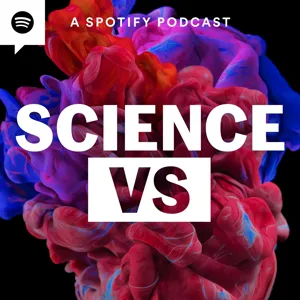Podcast Summary
Discussions on Capital One Venture X Card benefits and true crime on IndieWire Screen Talk, GoToMeeting affordability on Stuff You Should Know: The Capital One Venture X Card offers 2X miles on every purchase and premium travel perks, while the Stuff You Should Know podcast highlights GoToMeeting's cost-effective online business solution and Jerry Roland's growing popularity
The Capital One Venture X Card offers cardholders unlimited 2X miles on every purchase, along with premium travel benefits like airport lounge access and a $300 annual credit for bookings through Capital One travel. This discussion was brought to you during the IndieWire Screen Talk podcast, where hosts Ann Thompson and Ryan Latonsio interviewed legendary broadcaster Paula Zahn about true crime. Elsewhere, the Stuff You Should Know podcast discussed the affordability and convenience of using GoToMeeting for online business meetings, saving time and money on travel. In both podcasts, the guests shared valuable insights from their respective industries. Additionally, the Stuff You Should Know team mentioned the growth of their newest co-host, Jerry Roland, who has gained a significant following and become a fan favorite.
Helping the Innocent Regain Freedom: The Innocence Project aids innocent individuals with legal representation and DNA testing to prove their innocence, freeing 254 people from wrongful convictions.
The Innocence Project is an organization that helps exonerate innocent people who have been wrongly imprisoned, often through the use of DNA evidence and the efforts of law and journalism students. A recent interest in the project was sparked by a controversy surrounding the subpoena of journalism students' notes and grades from Northwestern University, highlighting the fine line between journalistic sources and the legal system. The Innocence Project, founded in 1992 by Barry C. Shek and Peter J. Newfield, provides top-notch legal aid to those who cannot afford it, allowing them to file appeals and request DNA testing to prove their innocence. Since its inception, the project has exonerated 254 people, with over 100 of those cases resulting in the identification of the actual perpetrator through DNA evidence. The importance of the Innocence Project lies in its ability to navigate the complex legal waters and provide a second chance to those who have been wrongly convicted.
Eyewitness misidentification and invalid forensic science leading to wrongful convictions: Eyewitness misidentification, a major cause of wrongful convictions, is more common in cross-racial identifications due to the 'other race effect'. Forensic science, including firearm toolmarks, shoe prints, and serology, lacks proper validation and is prone to errors.
Our criminal justice system is prone to errors leading to wrongful convictions. Two primary causes of these errors are eyewitness misidentification and invalidated or improper forensic science. Eyewitness misidentification, which is a factor in 75% of post-conviction DNA exonerations, can be particularly problematic when dealing with cross-racial identifications. Our brains are less adept at recognizing faces of different races, a phenomenon known as the "other race effect." As for forensic science, it often lacks proper validation, with techniques like firearm toolmarks, shoe print comparisons, and serology being particularly susceptible to errors. These issues are not limited to specific locations or movies; they are systemic and require careful attention and reform.
The pursuit of justice through technology and witness testimony is not foolproof: Technology like hair microscopy and bite mark analysis lack definitive accuracy, false confessions and snitch testimony contribute to wrongful convictions, and the average time spent in prison before exoneration is thirteen years.
While advancements in technology such as hair microscopy and bite mark analysis offer promising leads in criminal investigations, they still lack the definitive accuracy of DNA evidence. False confessions and incriminating statements, particularly from vulnerable populations like the mentally disabled or indigent defendants, continue to contribute to wrongful convictions. Additionally, the use of snitches, who may be lying to reduce their own involvement in criminal activities, can also lead to erroneous convictions. The Innocence Project reports that the average time spent in prison before exoneration is thirteen years. These factors underscore the importance of a robust and unbiased investigation process, as well as access to adequate legal representation for all defendants.
Questionable testimony from a prison snitch and biased witness: The conviction of William Dillon for murder relied on doubtful testimony from a snitch and a biased witness, casting doubt on the case's validity
The case against William Dillon for a murder conviction was built on questionable testimony from a prison snitch and a biased witness, who later recanted their statements. The snitch's rape charges against him were dropped by the prosecutors after his testimony. Another witness, who was Dillon's girlfriend at the time, admitted to having an inappropriate relationship with the lead investigator and testified against him in exchange for leniency on her own charges. Additionally, a key eyewitness, who claimed to have picked up the hitchhiker wearing a bloody yellow t-shirt on the night of the murder, had a questionable alibi and description of the suspect. These inconsistencies and potential biases raise serious concerns about the validity of Dillon's conviction.
A Man's Wrongful Conviction and Exoneration: Preserving all potential evidence and questioning the reliability of eyewitness and dog identification testimony are crucial for justice.
A man named Bill Dylan was wrongfully convicted of a crime based on flimsy evidence, including a false identification by a dog handler and a t-shirt that was later discovered to not contain his blood. The case, which dates back to 1981, saw Dylan serving 26 years in prison before being exonerated thanks to the Innocence Project. The only remaining evidence from the case was the t-shirt, which was kept by a court reporter. The use of a dog for identification was later proven to be unreliable, and Dylan's conviction was overturned due to the new DNA evidence. The case highlights the importance of preserving all potential evidence and the potential fallibility of eyewitness and dog identification testimony.
Remembering the Innocent: 254 Post-Conviction Exonerations in the US: Despite rare cases of exoneration, thousands of innocent people remain in prison. The Innocence Project has led to fewer death penalty cases and increased caution among prosecutors, but more efforts are needed to address wrongful convictions.
While the case of Bill Dillin, who was exonerated after serving 25 years in prison for a murder he didn't commit, is a rare example of the legal system working to free an innocent man, it's important to remember that there are many other innocent people in prison whose cases may never be resolved. According to the Innocence Project, there have been 254 post-conviction exonerations in the US, 17 of which were death row inmates. Additionally, 22% of the cases closed by the Innocence Project were due to lost or missing evidence. The author of a 2004 study found that death row inmates represented 22% of total exonerations between 1989 and 2004, suggesting that the general prison population may not have a significantly higher percentage of wrongfully imprisoned individuals. The Innocence Project, along with other affiliated law schools and programs, has led to fewer death penalty cases and increased caution among prosecutors. Thousands of letters from innocent prisoners continue to pour in, highlighting the need for continued efforts to address wrongful convictions.
The Innocence Project's mission to exonerate wrongly convicted individuals through DNA evidence: The Innocence Project uses volunteers to review letters and determine if DNA evidence exists, but not all states preserve evidence, making their work challenging. They aim to exonerate individuals who have been wrongly sentenced to death.
The Innocence Project is an organization dedicated to proving the innocence of individuals who have been wrongly convicted through DNA evidence. They rely on volunteers, including a high school teacher, ACLU veteran, formal journalist, and poet, to sift through letters and determine if there's still viable DNA evidence. However, not all states require the preservation of evidence after a conviction, and even in those that do, there's often a lack of consequences for disposing of it. The Justice for All Act, passed in 2004, offers financial incentives to states that maintain evidence, but it's seen as a weak solution. The Innocence Project's ultimate goal is to exonerate individuals who have been wrongly put to death. Barry Scheck, a key figure in the organization, is determined to achieve this feat, although he hasn't done so yet. The Innocence Project's database contains information on every DNA exoneration case, and their work is documented in various media, including the Investigation Discovery episode "Killing in Canova Beach." Overall, the Innocence Project plays a crucial role in correcting miscarriages of justice and ensuring that DNA evidence is not overlooked or discarded.
Finding joy in unexpected places: Even on tough days, finding joy in simple things can turn your day around. Share your stories with us at Stuff Podcast.
Even on the worst days, finding humor and positivity can make all the difference. Becca, a Facebook listener, shared her story of a particularly challenging day filled with unexpected events and workplace struggles. Despite the numerous setbacks, she found solace in the simple pleasure of listening to a podcast discussion on the number of syllables in the word "squirrel." This small moment of joy helped turn her day around and reminded us all that even on our toughest days, there's always something to be grateful for and laugh about. So, whether you're having a great day or a bad one, share your stories with us at Stuff Podcast at howstuffworks.com. And for a safe and positive online experience for kids, check out Zigazoo, the world's largest and safest social media network for kids where all community members are verified and all content is fully human moderated.
IndieWire's Weekly Screen Talk Podcast: Insights from Film and TV Industry Experts: Listen to IndieWire's weekly podcast for valuable insights from filmmakers, executives, and industry experts in the film and TV industry. Try out Zigazoo, a new app suggested on the podcast, for spring break activities.
If you're looking for insightful and in-depth discussions on the latest news in the film and TV industry, consider checking out IndieWire's weekly screen talk podcast. Hosted by Anne Thompson, editor at Large for IndieWire, and Ryan Latonsio, deputy film editor, this podcast offers valuable insights from filmmakers, executives, and industry experts every Friday morning. You can listen to it on iHeart platforms or wherever you get your podcasts. Additionally, if you're planning for spring break, Anne and Ryan suggest trying out Zigazoo, a new app that they mentioned on a recent episode. So, whether you're interested in the latest industry news or looking for a new app to try during your break, tune in to IndieWire's podcast for informative and engaging content.




